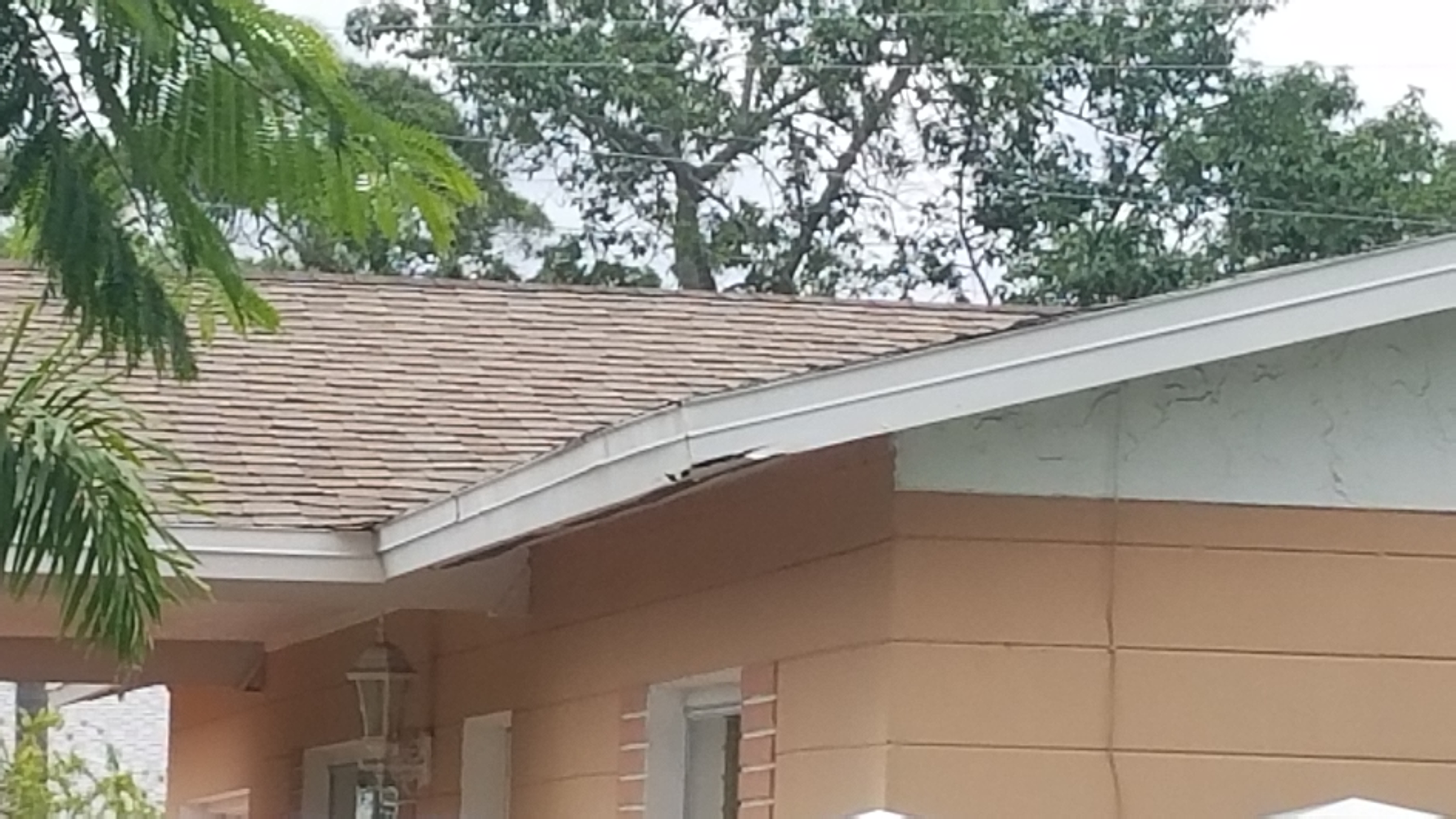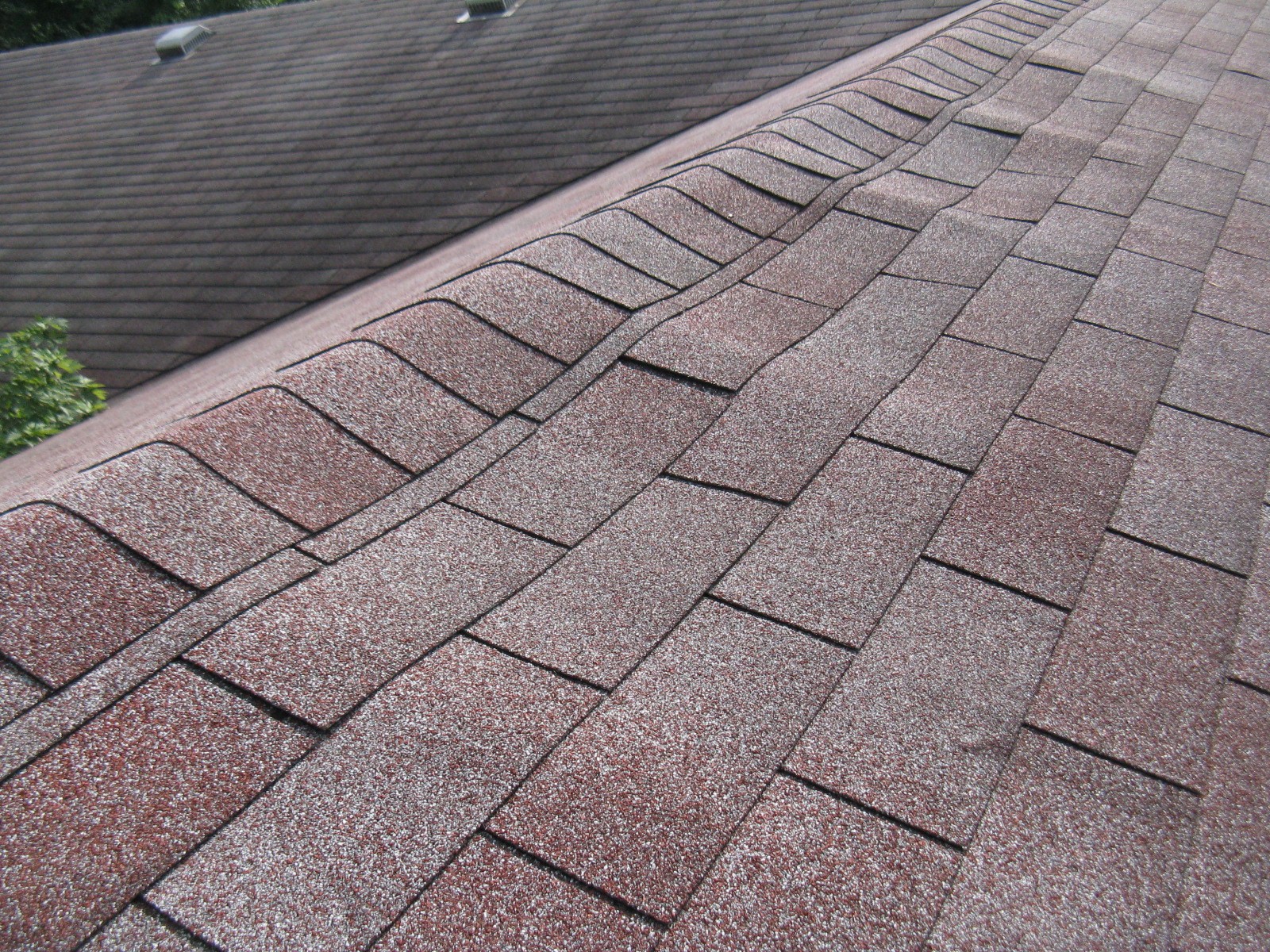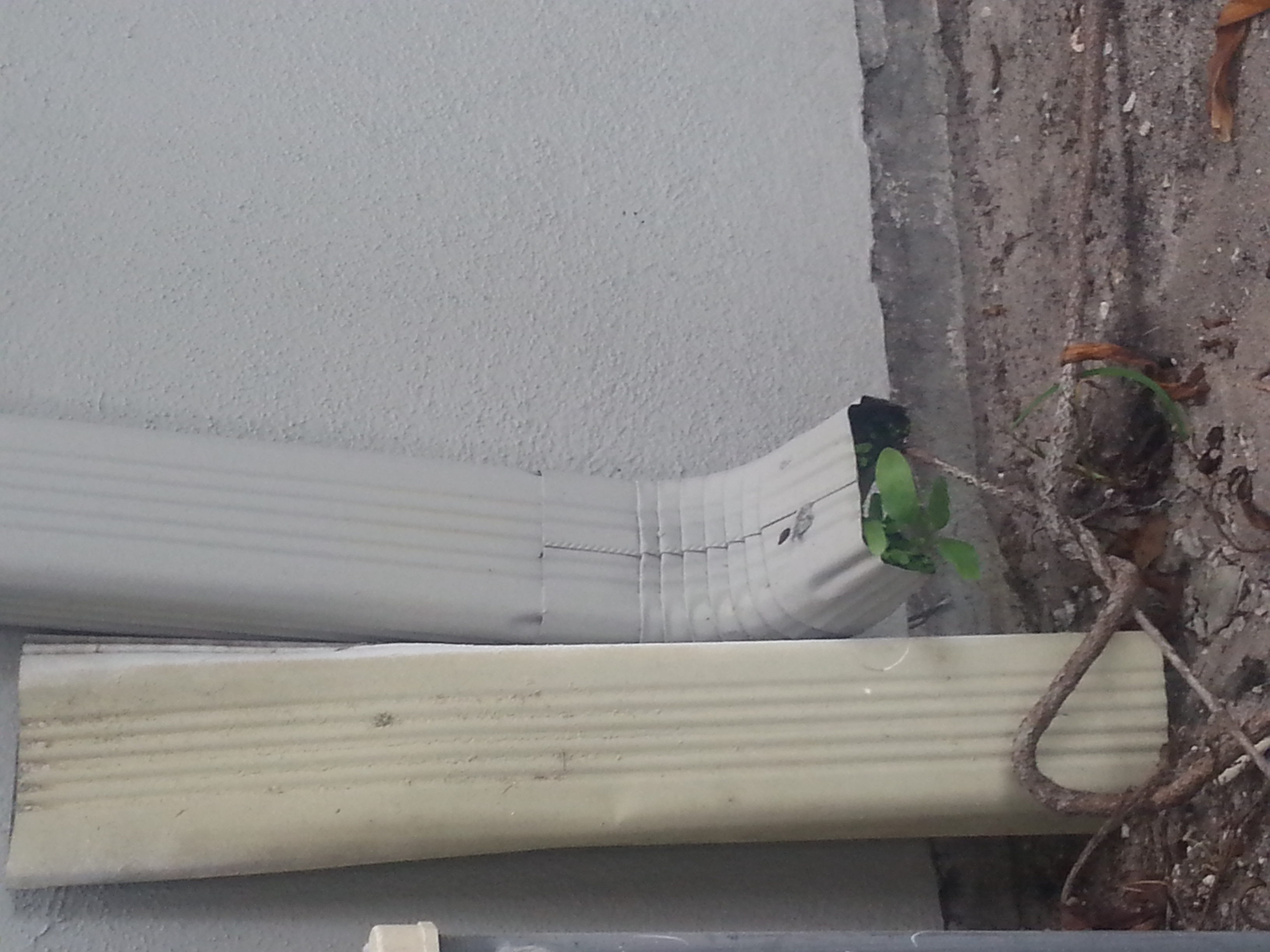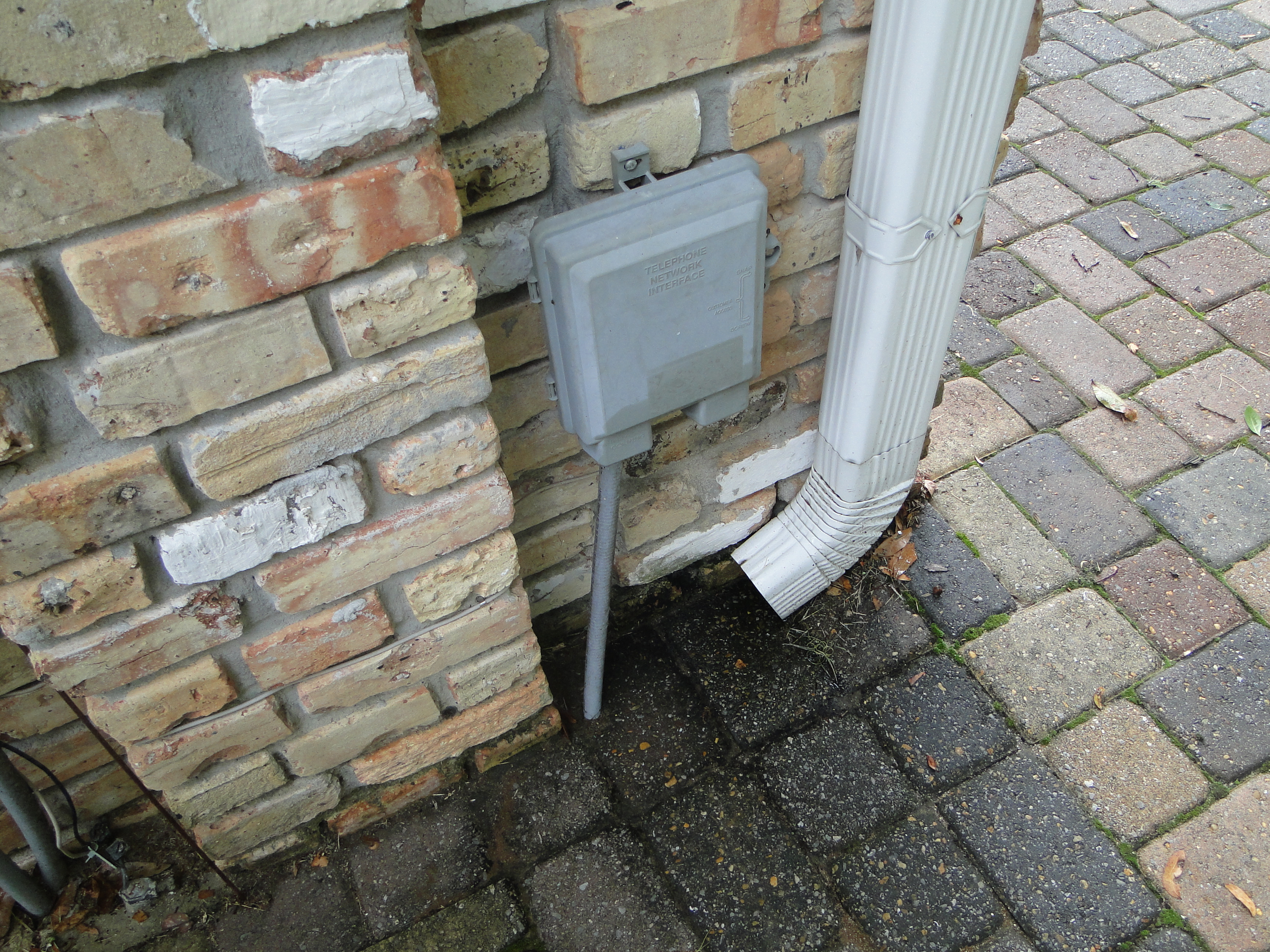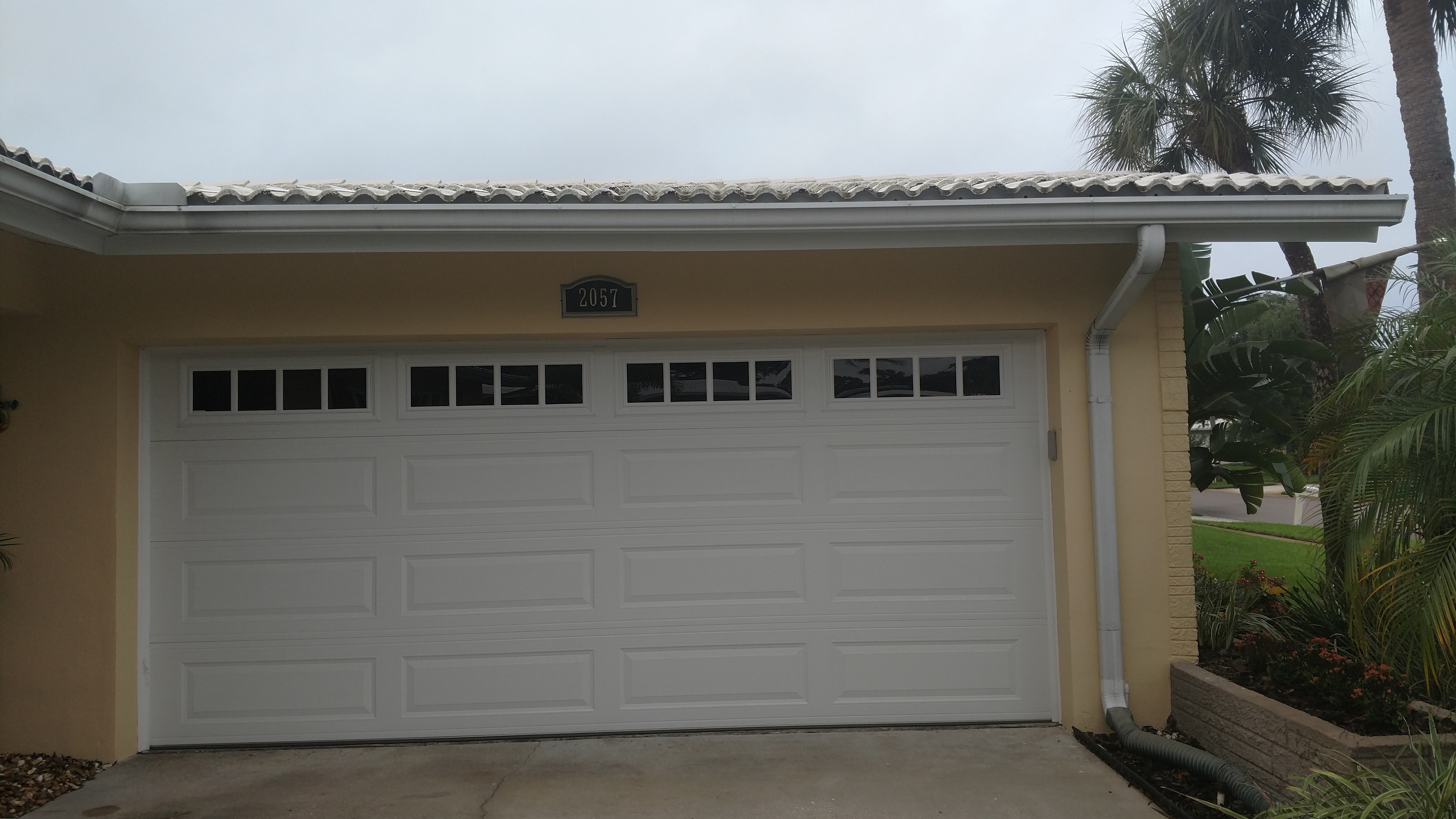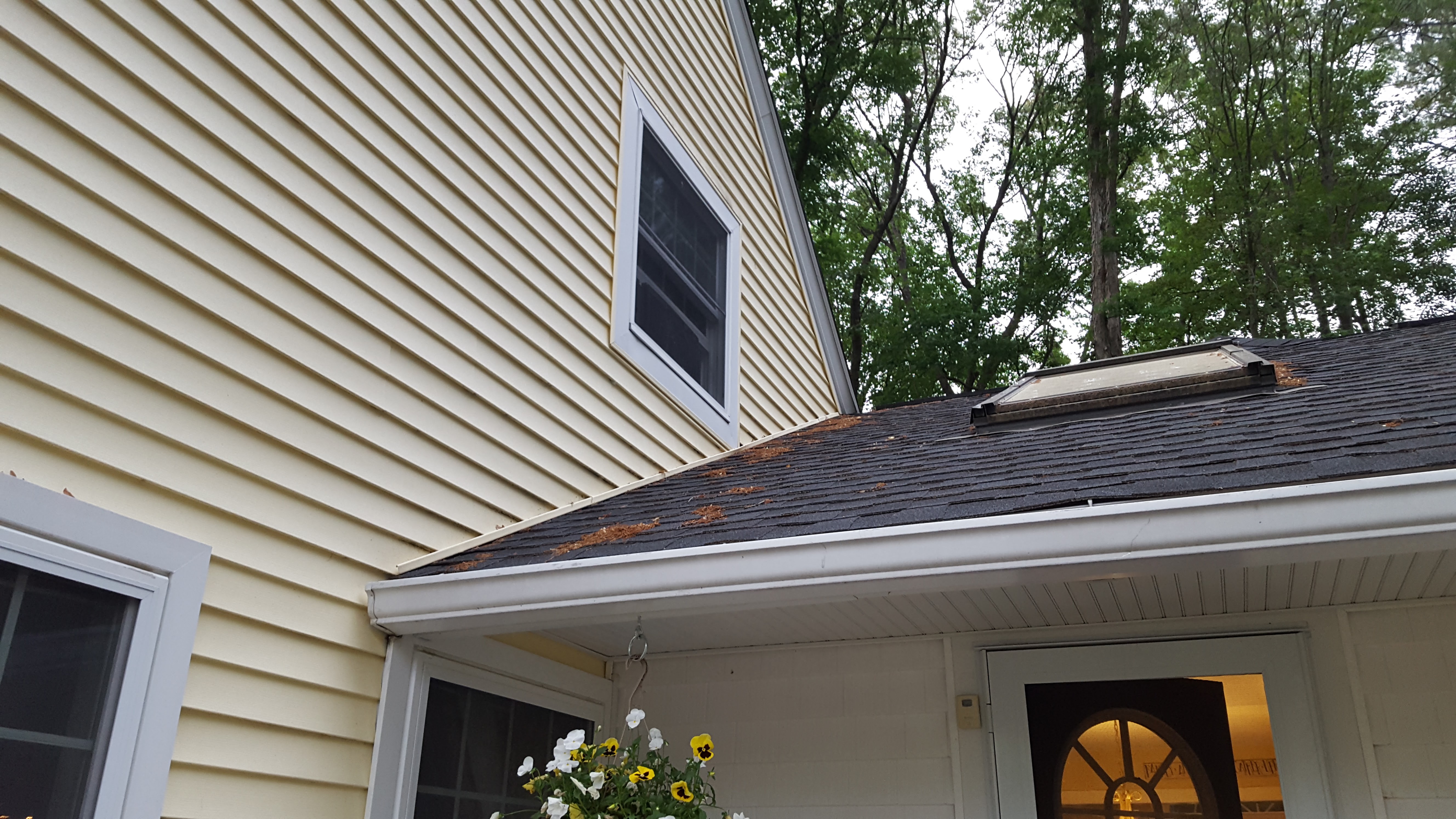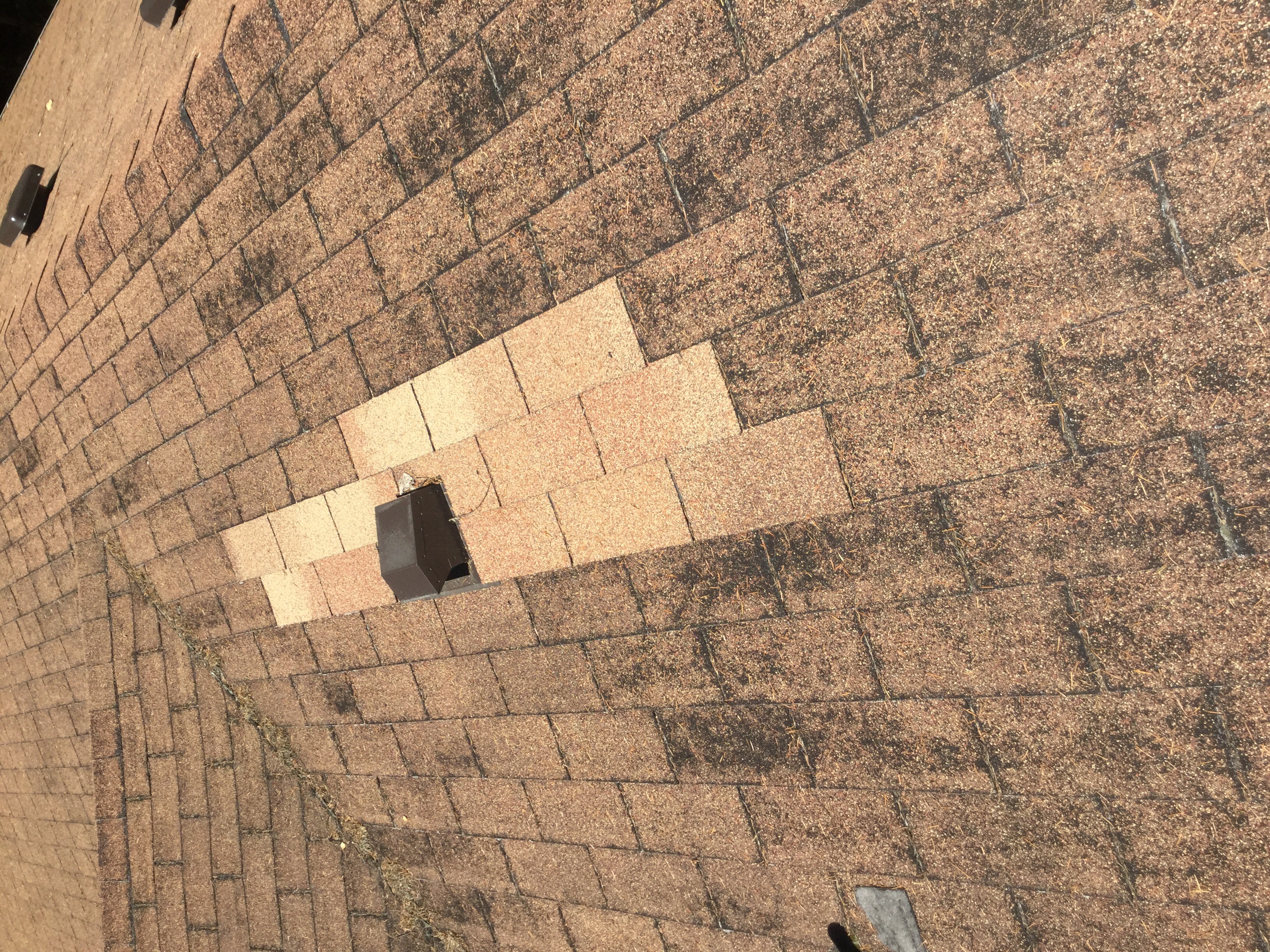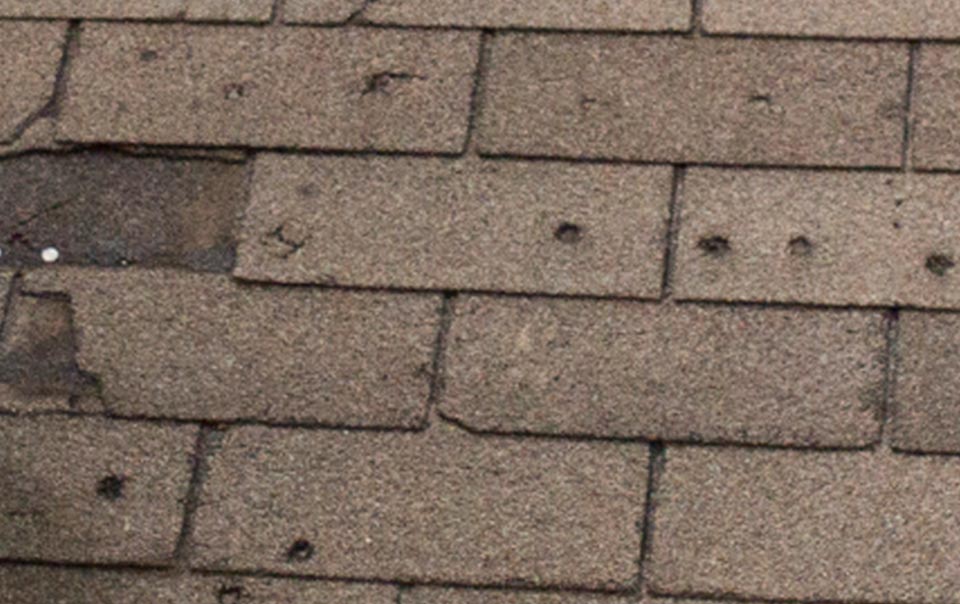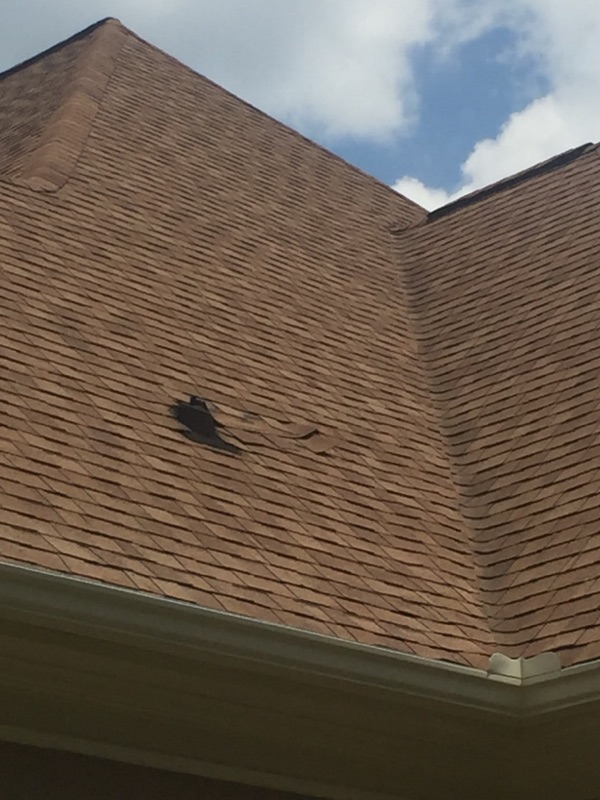Inspectors are not required to walk on roofs. Inspections can be made from a ladder or from the ground with binoculars. Some other ways are with drones with cameras. Safety should always be considered. There are many different types of roofing materials that can be used. If you have any doubt about a roof don’t be afraid to let client to hire a certified roofer. Never predict the life expectancy of a roof that maybe construed as a warranty.
In The attached picture the installed drip edge is still intact but the fascia board is showing signs of rot and separating at the corner. It is highly recommended that a licensed roofing professional inspect and make repairs as needed.
I chose to review the proper nail installation for asphalt shingles. A properly installed fastener should be perpendicular to the shearing and flush with the surface of the shingle. A fastener installed to deep, to shallow or at an angle can greatly shorten the life of the shingle as well as the fastener itself. This can potentially lead to water penetration.
This picture shows possible issues with the sheathing used or a structural issue with the support underneath. This could be caused by faulty installation or could show that there is possible moisture damage. Further inspection would be needed from the attic space to make further determinations.
I’ve learned how to identify possible issues related to the inspection of roofing and materials. This includes inspection of the roof from both above and below. Most issues are caused by weather related issues, either from moisture intrusion or from improper support.
While inspecting this gutter system it was observed that this gutter is not in proper condition.There is a noticeable section missing at the termination point which is sitting to the left of it.This may indicate drainage is not flowing away from the building properly.Also there is vegetation growing at the bottom which my indicate improper drainage.
On inspecting the gutter and downspout system on this home I found the gutter system to be in satisfactory working condition. The only problem found was that the downspout on the front N/E corner of the home was not properly discharging water away from the foundation and needs to be corrected. All of the other downspouts were properly discharging water away from the home.
Aluminum siding has some advantages as well as disadvantages.Some advantages include being waterproof,termite resistant,is very lightweight and can be painted.Some disadvantages are that it does need to be repainted atleast every ten years.Also it can dent easily and is generally going out of style.
Gutter Improperly Discharging onto Roof-Open ended gutter on side of 2nd floor dormer. 2nd floor downspout discharging onto lower roof plane. Asphalt shingles are water-resistant, not waterproof, and increased drainage onto shingles will result in increased wear, and also includes the risk of greater leak potential along these areas.
In researching commercial roofing I found that the old Coal Tar pitch roofing system represents the industry’s premier built-up roof membrane assembly. It is in the Coal Tar’s unique molecular structure that provides a system that resists water and vapor penetration, insect damage, chemical attack, UV exposure and most elements considered common enemies to other roof membrane systems like the new modified or rubber single ply’s. Even after a period of 75 to 100 years there are still Coal Tar systems preforming today on some commercial buildings.
Shown in the image is twenty feet of aluminum 6" gutter with a 3"x 4" downspout. The downspout is permanently installed with adequate strapping and is the correct size to handle the amount of drainage required for the square footage of the roof area. There is an accessory 6" accordion style plastic pipe which extends 8’ beyond the bottom elbow of the downspout to an area that has sufficient slope for proper drainage from the structure foundation. The pipe is not permanently fastened to the bottom elbow of the downspout. The area directly in the vicinity of the downspout does not offer proper drainage from the foundation wall. Recommend fastening pipe to downspout.
The gutter is fastened with spike and ferrule through facia board and there is no evidence of spikes backing out.
The gutters are free of debris and show no standing water.
The gutter is fastened with rivets in the corner to a 90 degree union. There is a dark spot in the concrete driveway directly below the ninety degree union which may indicate a leak.
There is a metal gutter and downspout assembly on the front porch entry of this home.
The gutter is fastened to the fascia via brackets that are installed beneath the asphalt composition shingles.
The downspout is connected to the gutter and secured with rivets at connection points. The downspout discharges storm water away from the building.
We were unable to evaluate the interior of the gutter for debris accumulations however overhanging trees indicate that seasonal accumulations of organic matter (i.e. leaves, pine needles, etc.) should be removed regularly.
There is no kick-out flashing at the left side of the porch roof noted at the time of inspection. Kickout flashing is recommended to direct roof water discharge away from adjacent exterior sidewalls.
Three tab asphalt shingles showing significant granule loss. Repair work around roof penetration indicates possible leaking. Moss building up and debris are contributing to the deterioration of the shingles. I recommend a roofer reevaluate and repair as necessary. Anticipate tear off of existing roof covering and replacement.
For the essay I chose: Mastering Roof Inspections: Roof Penetrations, Part 1
The article details the proper step, and particularly the counter flashing for masonry and stone chimneys. It points out that when the counter flashing is either missing, or installed wrong sealant will be utilized to prevent moisture intrusion. Rather than calling it out as a condition in need of repair the article suggests to say the flashing is installed in such a way that will require ongoing maintenance.
In looking at an older three tab asphalt shingle roof, I see several defects due to wind and hail storm damage. First, there are shingles missing and some shingles are ripped or torn off. There are numerous indentations from the hail damage. There are also some broken corners of shingles which is due to age. I recommend this roof be repaired by a licensed roofing contractor because the integrity of the roof is being affected.
Here is an image of a tile roof, showing obvious signs of damage and design issues to many areas. The ridge line has suffered structural integrity, the chimney intrusions are not flashed properly, the upper chimney height is incorrect to the ridgeline, and there has been obvious repairs to the existing tiles due to the color variations seen. On the plus side, there has been horizontal tie offs and bracing installed on the two taller chimneys to attached them to the roof surface. It cannot be determined if those tie-offs penetrate thru the entire chimney assembly as required. It does appear that there is a band of some king wrapping around the chimney that is part of that tie-off assembly. This roof and it sub-structure obviously need attention.
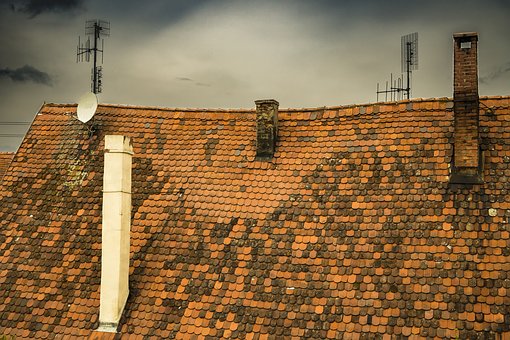
Ice dams are caused by a combination of conditions within a roof assembly. Insufficient insulation in an attic area creates a warm space under the roof decking, which in turn can warm the roof outer surface enough to melt the snow that is direct contact with that surface. The snow melt then runs down the roof surface, under the snow sitting above it, and hits the cooler area of the roof surface located just above the soffit areas, which are typically NOT heated and outside of the attic enclosure. The snow melt freezes at that location, before it enters the gutter system or runs off the edge of the roof. The ice then contains the ongoing moisture accumulation from above and builds up in size and mass until it creates a blockage to any further flow of water over the roof edge. This will typically stay in place until warmer weather occurs or is physically removed from the roof surface. Remediation is only accomplished by the proper insulation of the attic area.
I read the article titled Mastering Roof Inspections: Asphalt Composition Shingles, Part 1 . I learned shingles are known as a few different names but are all the same (asphalt, composition). Shingles are made from fiberglass or cellulose mats with asphalt and minerals in them. Shingles manufactured in the northeast are made from interwoven fiberglass mats embedded in asphalt covered with granules on the surface. This protects them from the weather. Together it forms a durable, flexible and waterproof roof covering.
As shown in the image attached, there is damage to the roof. The roof is covered with asphalt shingles. There is a hole in the roof and uplift on the shingles in two areas. This home has gutters, as shown in the image.
I chose the article, “Mastering Roof Inspections: Metal Roofs, Part 5.” This section is about barrier coatings which coat the metal roof to prevent the metal from corroding. Paint is a great form of barrier protection. There are different types of paint which can be used. They each have pros and cons.
